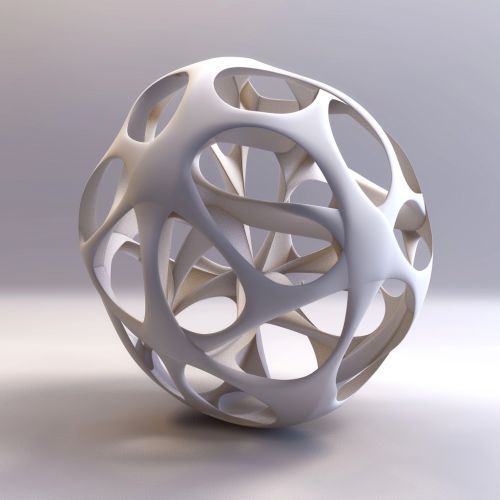Orbifold: Difference between revisions
(Created page with "== Introduction == An Orbifold is a concept in the field of mathematics, specifically within the domain of geometry and topology. It is a generalization of a manifold and, much like a manifold, it is a topological space with a local Euclidean structure. However, unlike manifolds, orbifolds allow for singular points of higher symmetry, which are locally modeled on quotients of Euclidean space by finite groups of isometries. <div class='only_on_deskto...") |
No edit summary |
||
| Line 3: | Line 3: | ||
An [[Orbifold]] is a concept in the field of [[mathematics]], specifically within the domain of [[geometry]] and [[topology]]. It is a generalization of a [[manifold]] and, much like a manifold, it is a topological space with a local Euclidean structure. However, unlike manifolds, orbifolds allow for singular points of higher symmetry, which are locally modeled on quotients of Euclidean space by finite groups of isometries. | An [[Orbifold]] is a concept in the field of [[mathematics]], specifically within the domain of [[geometry]] and [[topology]]. It is a generalization of a [[manifold]] and, much like a manifold, it is a topological space with a local Euclidean structure. However, unlike manifolds, orbifolds allow for singular points of higher symmetry, which are locally modeled on quotients of Euclidean space by finite groups of isometries. | ||
[[Image:Detail-77827.jpg|thumb|center|A 3D representation of an orbifold, showcasing its unique geometric properties.]] | |||
== Definition == | == Definition == | ||
Revision as of 23:02, 7 May 2024
Introduction
An Orbifold is a concept in the field of mathematics, specifically within the domain of geometry and topology. It is a generalization of a manifold and, much like a manifold, it is a topological space with a local Euclidean structure. However, unlike manifolds, orbifolds allow for singular points of higher symmetry, which are locally modeled on quotients of Euclidean space by finite groups of isometries.

Definition
Formally, an orbifold can be defined as a topological space that is locally homeomorphic to the quotient of some Euclidean space by a finite group action. This means that each point in the orbifold has a neighborhood that is equivalent to the quotient of an open set in Euclidean space by a finite group of isometries. These groups are known as the local groups of the orbifold.
Structure of Orbifolds
Orbifolds are characterized by their structure, which includes charts, transition maps, and singular points.
Charts
A chart on an orbifold is a pair (U, G), where U is an open subset of some Euclidean space and G is a finite group of diffeomorphisms of U. The action of G on U is properly discontinuous, meaning that for any compact subset K of U, there are only finitely many elements of G that move any point of K.
Transition Maps
Transition maps in orbifolds are defined between overlapping charts. These maps are required to be compatible with the group actions in the charts, which ensures that the orbifold structure is well-defined.
Singular Points
Singular points in orbifolds are points that have nontrivial local groups. These points are of particular interest in the study of orbifolds, as they are the points where the orbifold structure differs from the structure of a manifold.
Types of Orbifolds
There are several types of orbifolds, including effective orbifolds, good orbifolds, and bad orbifolds.
Effective Orbifolds
An effective orbifold is one in which the action of the local group at each point is effective, meaning that no nontrivial element of the group acts as the identity on the neighborhood of the point.
Good Orbifolds
A good orbifold is one that can be realized as the quotient of a manifold by a properly discontinuous action of a finite group. All good orbifolds are effective, but not all effective orbifolds are good.
Bad Orbifolds
A bad orbifold is one that is not good. These orbifolds cannot be realized as the quotient of a manifold by a group action, and they contain points with non-effective local groups.
Applications of Orbifolds
Orbifolds have found numerous applications in various fields of mathematics and physics. They are used in the study of symmetry in geometry and topology, in the classification of surfaces, and in the theory of discrete groups. In physics, orbifolds play a role in string theory and quantum gravity.
